Time domain (delay) effects 02
Tape delay part 1 - concepts and interconnections
- Video
- Script
Welcome to the first of two tutorials on tape delay.
Time domain (delay) effects were first made possible when sound engineers discovered they could exploit the gap between the record and repro heads of a tape recorder to delay a signal, and use the speed control to modulate the delay time and the pitch.
Today, the five primary parameters of time domain effects still derive their names from these processes. Therefore understanding how tape delay works provides an excellent foundation when configuring solid state and digital delay lines to create time domain effects.
The five parameters are ..
- delay time
- feedback
- modulation speed
- modulation width
- and finally, hi-frequency decay
These parameters are explained in detail in the next tutorial video in this playlist. To understand them, we must first understand tape delay signal routing.
Caption - Interconnection and signal routing
There are a number of ways to create a copy of a source signal, but the process was originally achieved by using an axillary send bus. The source signal travels down a mixer input channel strip and an axillary send bus creates and sends a 1st generation copy to a mono or stereo 2-track tape recorder dedicated to creating the delay.
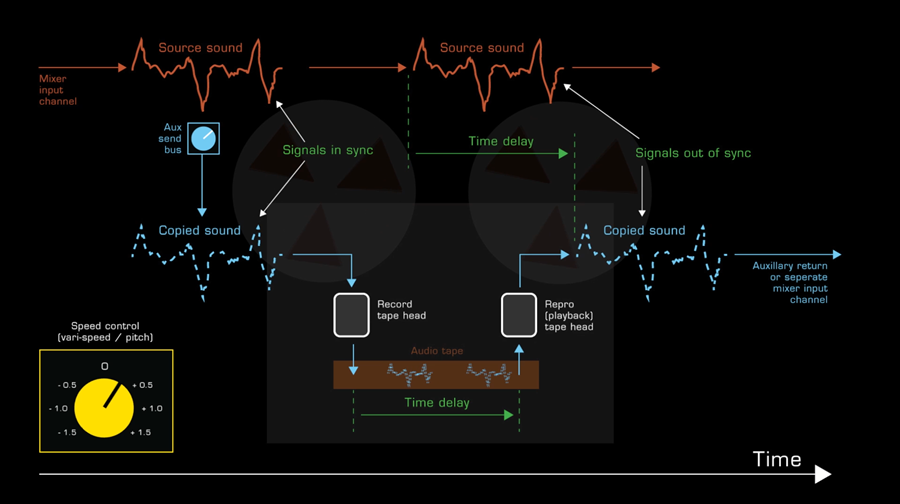
Once the 1st generation copy has been delayed by the tape recorder the signal is returned to the desk and input on a separate dedicated mixer input or axillary return channel. The source signal and the delayed copied signal can now be combined and balanced using the individual channel faders. Furthermore, any input channel can access the effect via its own axillary send.
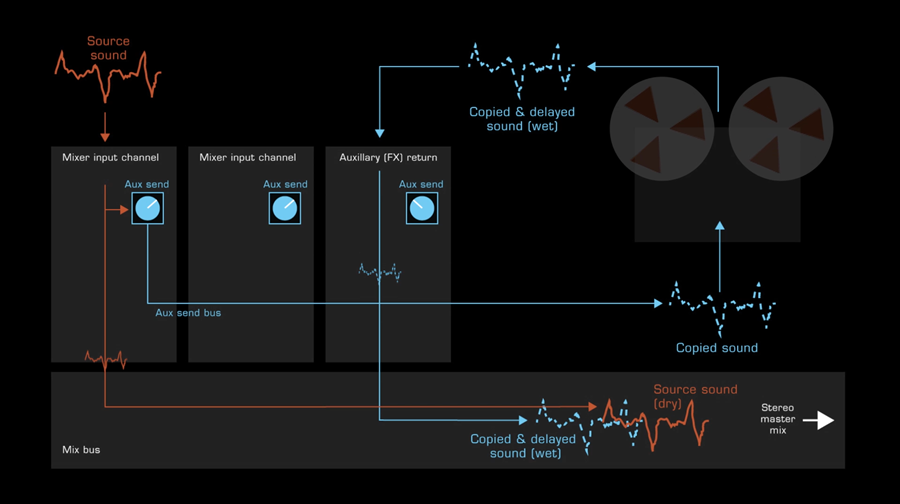
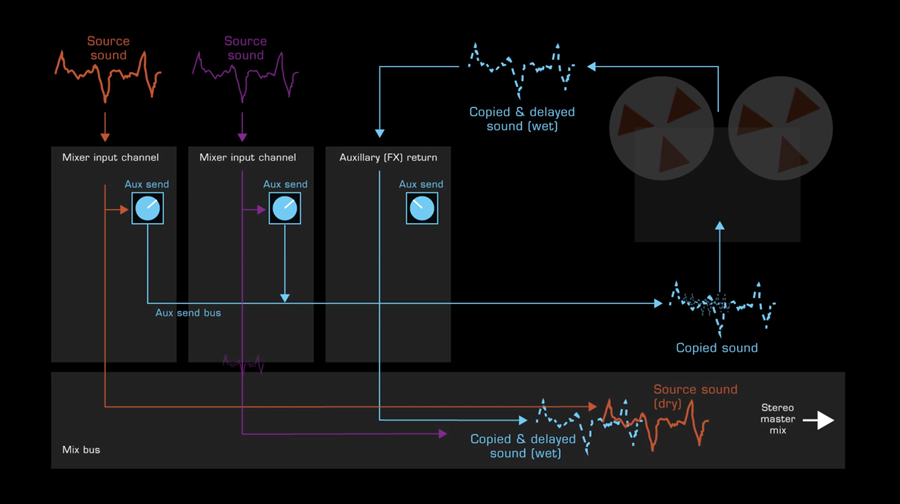
Today, because plug-ins allow us to balance the source and copied signals within the plug-in, we can also choose to insert the effect directly into a channel signal path. However, in this configuration the effect cannot be shared with other channels.
Caption - Creating short delay times
Phasing, flanging and chorus use the shortest delay times of all Time domain (delay) effects, typically between 1 and 30 milliseconds. Analogue solid state and digital delay lines are capable of these short delay times but most tape recorders are not. It was therefore necessary to employ a different technique to produce them.
In this case, rather than using an axillary send bus and tape recorder in a conventional send and return configuration, a complete duplicate of the source signal performance is recorded to the tape recorder.
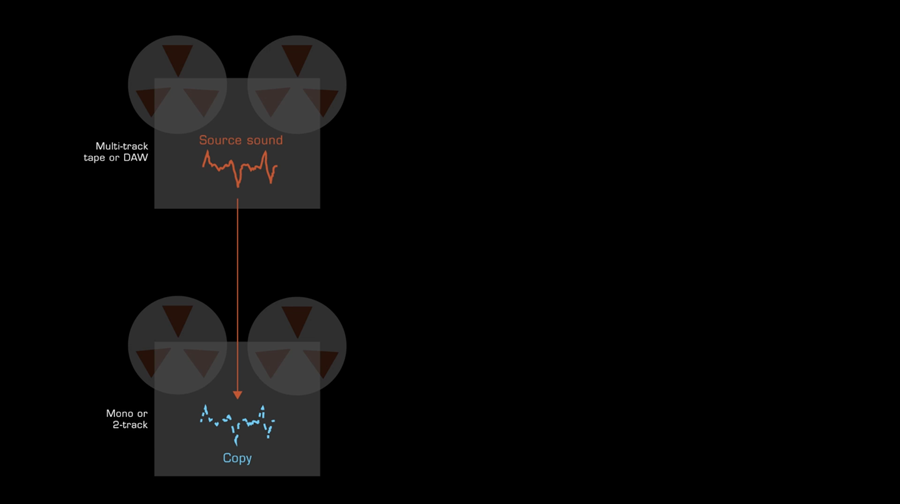
It is then rewound and played back in-sync with the source signal. The vari-speed control of the tape recorder is used to first set the delay time, and then to modulate it.
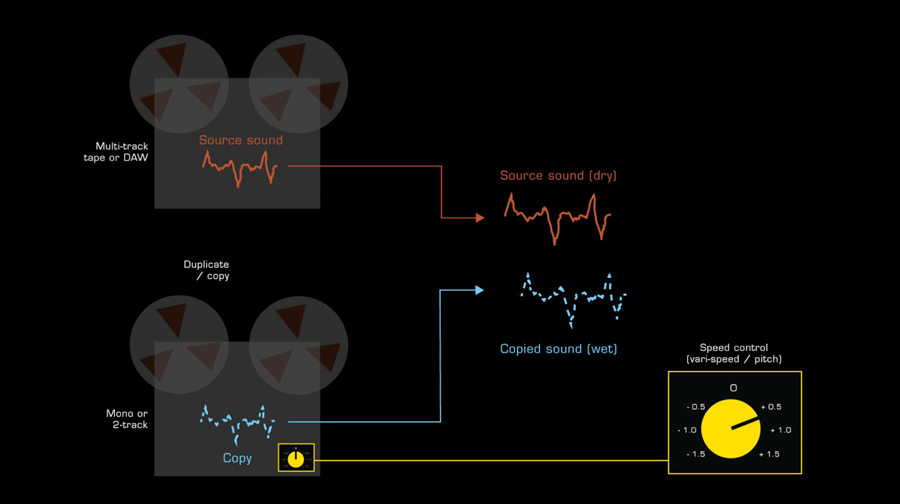
An alternative modulation method is to physically interfere with the tape reels themselves by placing a hand on the flange, or rim, of the tape reel to slow them slightly.
Caption - Dry and wet signals
Conventional sound engineering terminology refers to the source signal as dry and the copied and delayed effect signal as wet. They are usually combined together to create the desired effect. The source or dry signal is also sometimes called the direct sound.
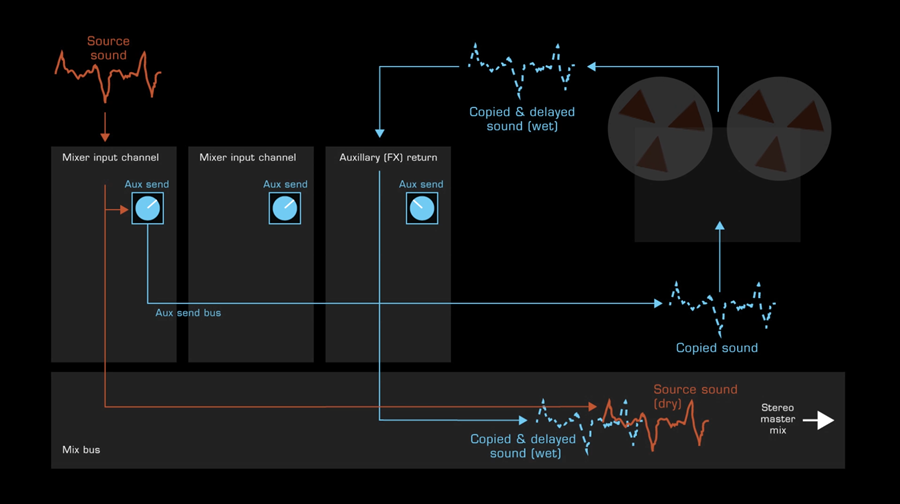
Caption - Thanks for watching
The script for this video, with accompanying images, can be found at projectstudiohandbook.com
We suggest you subscribe at our YouTube channel, and join our mailing list at our website to receive notification of new videos, blog posts and subscriber only extras.
Thanks for watching.